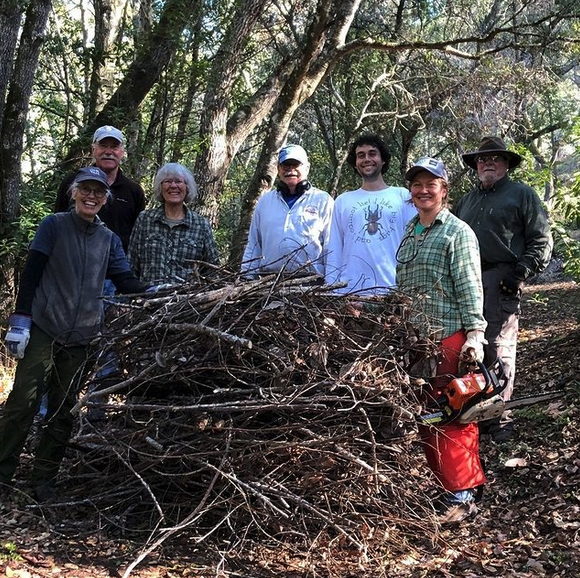Bring a class or schedule a presentation
Bring a Class / Schedule a presentation
Developing the skills to do science, not just learn content
Our three-hour, docent-led nature hike cultivates environmental literacy, connects what happens in your classroom to what happens on the trails of the preserves, and supports learning with a set of standards-based resources. The experience is designed for children in 3rd–5th grades.
Our program begins with an observation skills unit that your students can complete before their field trip and an introductory video that shows students what to expect on their field trip to Bouverie Preserve in the Sonoma Valley or Martin Griffin Preserve in West Marin. When the children arrive at the preserve, they are ready to explore nature first-hand.
The field experience doesn’t end when students return to the classroom
After the field trip your students can reflect on the experience by creating a drawing that recounts their time on the preserve and then share their reflections during an online session with their docent.
An example of what children have to say about this experience:
“The creek was fun because it felt really peaceful and ex(c)iting at the same time.”
“Finding a deer skull because I have never found a deer skull before.”
“I loved seeing all the flowers and pollinators in the oak woodland.”
“I ate in nature and that was new to me.”
Throughout the experience, you are supported by a set of standards-based resources — many are downloadable below.
Deepening engagement: Learning to be a good neighbor to wildlife
Our Wild Neighbors Unit on mountain lions
Audubon Canyon Ranch ecologists and partners are studying our region’s mountain lions using GPS-collars to understand their lives and needs by tracking their movements in this human-populated and fragmented landscape. Many people are unaware of or are uncomfortable with co-existing with America’s top predator. We aim to replace fear with curiosity and empathy through sharing what we know about mountain lions. To provide students with in-depth knowledge we have created a series of lessons that culminates in a session with a Lion Ambassador, a knowledgeable volunteer on the Living with Lions Project.
To accommodate everyone’s needs and a changing Covid-19 landscape, we now offer two learning opportunities which cover the same content—remote and in-person. Both require teachers to teach the provided lessons before a visit with a mountain lion ambassador. For those schools which are not in our geographic area of operation, we are only able to offer the remote program.
Our Wild Neighborhoods unit and Mountain Lion Ambassador visit interest form
Our Wild Bird Neighbors Unit on Great Egrets
This unit teaches about the lives of Great Egrets and other wading birds that live and nest in the Bay Area. Students will learn about the lives of these majestic birds and how to help insure their survival through story books, lessons, videos, and a board game. The unit includes a graphing lesson that meets fourth-grade math and science standards and a mapping activity that teaches students about reading maps and scale.
Related Content
- Submitted by admin
- May 31, 2022
- Submitted by admin
- October 19, 2021
- Submitted by Wendy Coy
- February 6, 2023



